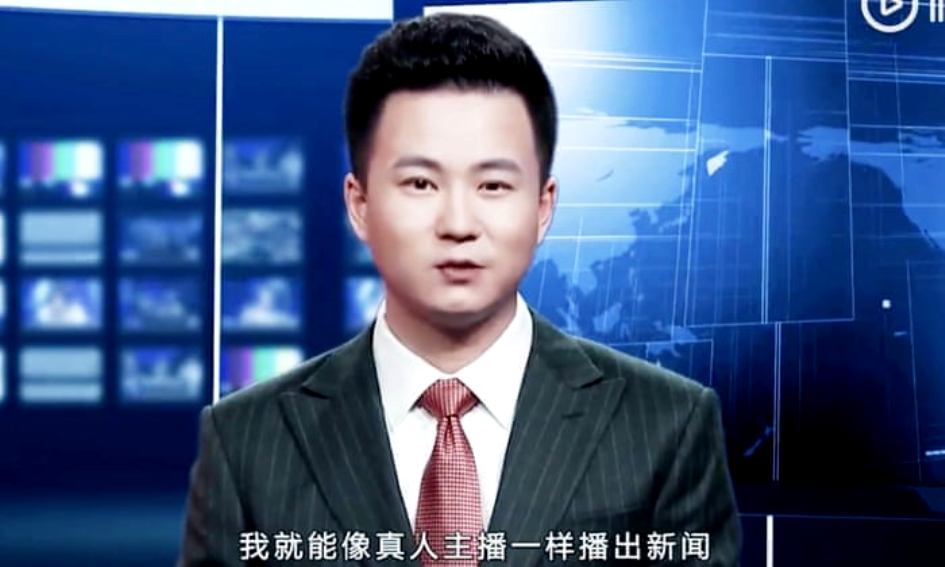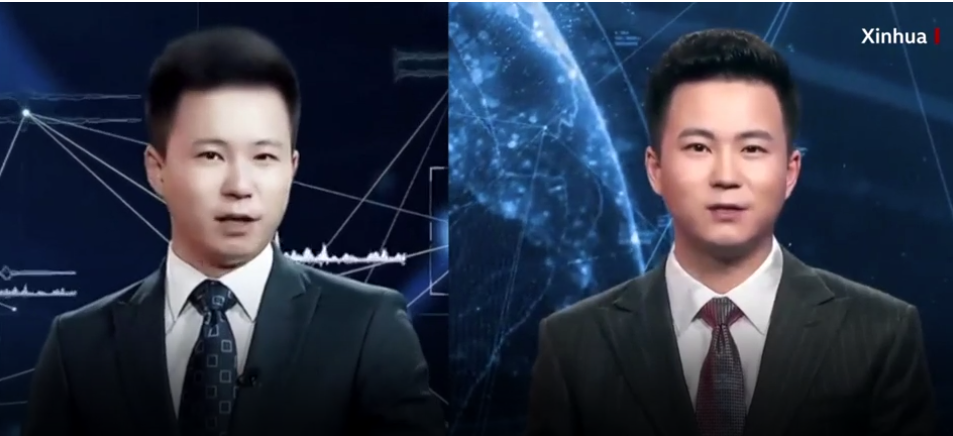

On this month's Oddities in the News Page:
China now uses robotic Artificial Intelligence (AI) for newscasters
IN THE ODDITIES ARCHIVES
Harvard University UFO
Loch Ness
Clone
Donald Trump Look-Alike
A Real Killer Clown
New Dinosaur

The above newscaster is not a real person
NPR, December 9, 2018 -- "This is my very first day at Xinhua News Agency," says a sharply dressed artificial intelligence news anchor. "I look forward to bringing you the brand new news experiences."
China's Xinhua News Agency has billed the technology as the "world's first artificial intelligence (AI) news anchor," unveiled at the World Internet Conference in China's Zhejiang province.
The anchor "learns from live broadcasting videos by himself and can read texts as naturally as a professional news anchor," Xinhua says. Some disagree about whether the technology appears natural.
You can decide for yourself below, with an AI robot modeled after real Xinhua anchor Zhang Zhao (the real anchor is on the left):

The AI anchor was produced with "facial landmark localization" and "face reconstruction," according to China Daily. As the BBC notes, it "appears that photo-like facial features have been applied to a body template and animated."
It was designed jointly with the Chinese search engine company Sogou.com. Reuters reports that there's another version of the AI anchor, modeled on real anchor Qiu Hao. The wire service added that Sogou staff "said it wasn't clear when the technology would actually go into use."
Xinhua points to what it sees as certain advantages of an AI anchor, saying it "can work 24 hours a day on its official website and various social media platforms, reducing news production costs and improving efficiency." South China Morning Post suggests it could save networks money in news anchor salaries, and even "one day challenge the human variety."
But some experts are skeptical about the kind of news-watching experience an AI news anchor offers.
"It's quite difficult to watch for more than a few minutes. It's very flat, very single-paced, it's not got rhythm, pace or emphasis," Michael Wooldridge from the University of Oxford told the BBC. And compared to a trusted human news anchor, he says that "if you're just looking at animation you've completely lost that connection to an anchor."
The news is amusing some actual news presenters — BBC's Simon McCoy burst out laughing while reading that Xinhua claimed its AI anchor was just as natural as a human one.
And of course, as The Washington Post notes, an AI anchor is "devoid of decision making and processing skills and cannot offer the emotional element given by a real journalist."
Artificial intelligence technology is becoming more commonly used by news organizations. For example, the Post has used a bot system called Heliograf to automatically write text that humans can add to for breaking news events such as elections and the Olympics.
See the entire article HERE
See a video about how it's done HERE
See an artificial anchor speak in English HERE

What is AI?
From SIRI to self-driving cars, artificial intelligence (AI) is progressing rapidly. While science fiction often portrays AI as robots with human-like characteristics, AI can encompass anything from Google’s search algorithms to IBM’s Watson to autonomous weapons.
Artificial intelligence today is properly known as narrow AI (or weak AI), in that it is designed to perform a narrow task (e.g. only facial recognition or only internet searches or only driving a car). However, the long-term goal of many researchers is to create general AI (AGI or strong AI). While narrow AI may outperform humans at whatever its specific task is, like playing chess or solving equations, AGI would outperform humans at nearly every cognitive task.
What are the limits of AI today?
To see why modern AI is good at a few things but bad at everything else, it helps to understand how deep learning works. Deep learning is math: a statistical method where computers learn to classify patterns using neural networks. Such networks possess inputs and outputs, a little like the neurons in our own brains; they are said to be “deep” when they possess multiple hidden layers that contain many nodes, with a blooming multitude of connections.
Deep learning’s advances are the product of pattern recognition: neural networks memorize classes of things and more-or-less reliably know when they encounter them again.
But almost all the interesting problems in cognition aren’t classification problems at all. “People naively believe that if you take deep learning and scale it 100 times more layers, and add 1000 times more data, a neural net will be able to do anything a human being can do,” says François Chollet, a researcher at Google. “But that’s just not true.”
What are the benefits of AI?
AI today is a huge benefit to society because it enhances our efficiency and throughput, while creating new opportunities for revenue generation, cost savings and job creation.
Humans are not best served by doing tedious tasks. Machines can do that, so this is where AI can provide a true benefit. This allows us to do the more interpersonal and creative aspects of work.
What are the risks?
Because AI has the potential to become more intelligent than any human, we have no surefire way of predicting how it will behave. We can’t use past technological developments as much of a basis because we’ve never created anything that has the ability to, wittingly or unwittingly, outsmart us. The best example of what we could face may be our own evolution. People now control the planet, not because we’re the strongest, fastest or biggest, but because we’re the smartest. If we’re no longer the smartest, are we assured to remain in control?